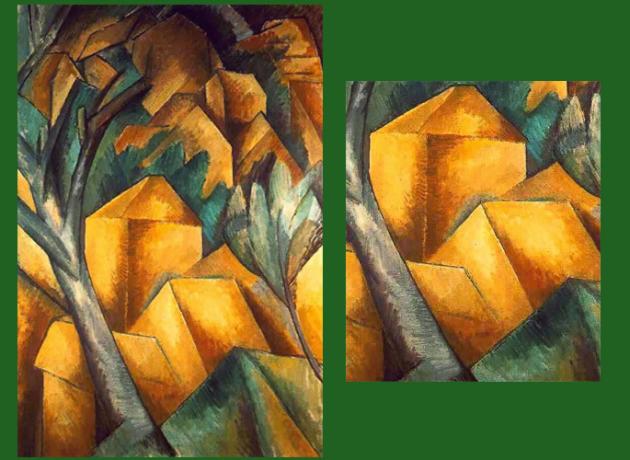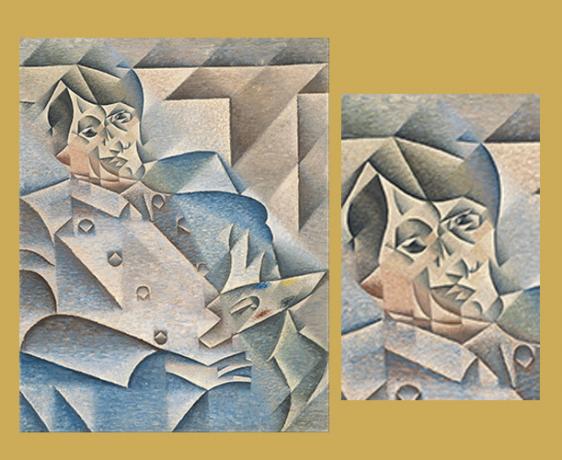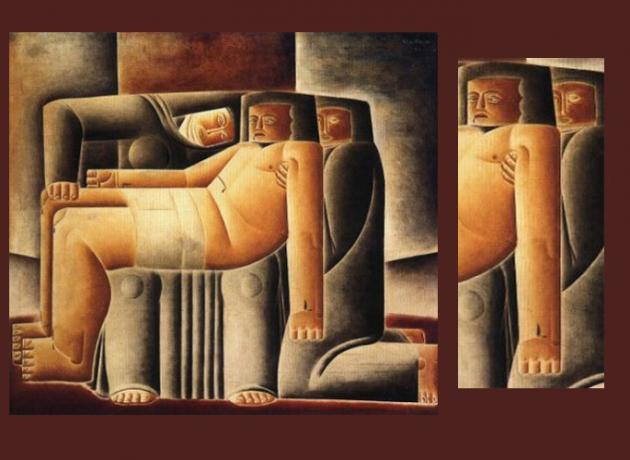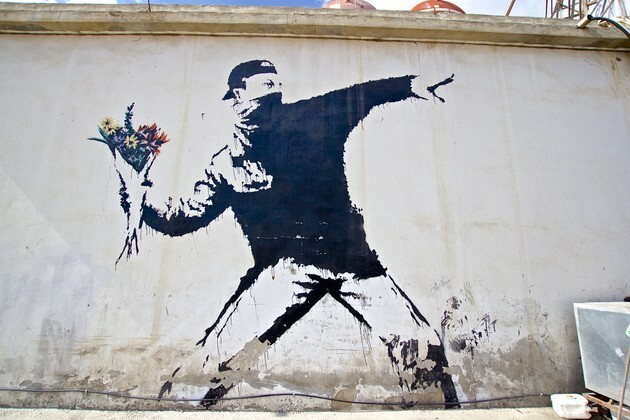Cubism was an important artistic movement that was part of the European avant-gardes that took place at the beginning of the 20th century.
In this current, which developed more intensely in painting, forms are represented geometrically, causing a sensation of sculptural painting.
We selected 8 significant cubist works belonging to this strand of art history both in the world and in Brazil. Check out!
1. The Ladies of Avignon (1907), by Picasso

This is an iconic work from the Cubist avant-garde. Considered the first entirely cubist work, Les Demoiselles d'Avignon it was produced in 1907 by the Spanish painter Pablo Picasso.
The screen shows five nude women represented in geometric lines. Note that the two girls on the left have faces like African masks. This detail explicitly displays the influence of "primitive" art on Picasso's work.
- Artist: Pablo Picasso
- Year: 1907
- Dimensions: 244 x 234 cm
- Location: Museum of Modern Art, New York, USA
2. Houses in L'Estaque (1908), by Braque

French painter Georges Braque was the founder of the Cubist movement, along with Pablo Picasso.
In this work (Maisons à L'Estaque, in French), from 1908, the artist portrays a group of houses as if they were really "cubes". In the composition it is not possible to see the horizon or the sky, only the urban landscape amidst the trees.
The shading in the houses brings depth to the scene, formed in shades of gray, green and ocher.
- Artist: Georges Braque
- Year: 1908
- Dimensions: 73 x 59.5 cm
- Location: Museum of Art, Bern, Switzerland
3. Violin and Cântaro (1910), by Braque

This work by Georges Braque belongs to the so-called "analytical phase" of Cubism.
Here, we see a composition in which the violin and pitcher are the objects represented in the scene. However, they appear multifaceted, as if seen through a shattered mirror.
The painter intended to produce new ways of representation, fragmenting objects and deconstructing traditional notions of perspective. Because of this, Analytical Cubism almost always used very neutral chromatic tones.
- Artist: Georges Braque
- Year: 1910
- Dimensions: 117 x 81.5 cm
- Location: Museum of Art, Basel, Switzerland
4. Portrait of Pablo Picasso (1912), Juan Gris

This portrait of Pablo Picasso was done by the Spanish painter Juan Gris in 1912.
It was produced in the early years when the new artistic strand was emerging and is one of the first Cubist works made by an artist other than the founders of the movement.
In the composition, Picasso is depicted at the age of 31 holding a palette of paint. The straight lines and geometric shapes are expressive, but it is still possible to recognize the figure in the scene.
- Artist: Juan Gris
- Year: 1912
- Dimensions: 92.3 × 74.4 cm
- Location: Art Institute of Chicago, USA
5. Cubist Nude (1916), Anita Malfatti

The Brazilian Anita Malfatti was a pioneer artist of modernism in Brazil. Having studied in Europe at the time when the artistic avant-gardes were simmering, the painter was greatly influenced by these movements.
on your screen cubist nude, Anita displays the figure of a nude woman represented in diffuse forms. Figure and background blend in similar colors. Here, we see the influence of the Cubist movement, however, the painter knew how to reconcile such references with her particular view of the world.
- Artist: Anita Malfatti
- Year: 1916
- Dimensions: 51 x 39 cm
- Location: Private Collection
6. Pietà (1924), by Rego Monteiro

The Brazilian painter Vicente do Rego Monteiro was one of the artists who participated in the Modern Art Week, in Sao Paulo.
He produced works heavily influenced by the Cubist aesthetic, which was crafted in a very unique way. One of these canvases reproduces the religious theme Pietà, in which the Virgin Mary holds the lifeless body of her son Jesus.
In this work, we see the figures quite geometric. Colors are neutral and bodies are displayed in straight lines and cylindrical shapes, which suggests an idea of a sculptural body.
- Artist: Vicente do Rego Monteiro
- Year: 1924
- Dimensions: 110 x 134 cm
- Location: Museum of Contemporary Art, São Paulo
7. Guernica (1937), by Picasso

Guernica is one of the best known works of Pablo Picasso. The painter carried out the composition in 1937 during the Spanish Civil War, which decimated hundreds of people.
On the screen, a war scene is displayed in which the bodies appear fragmented and with expressions of horror. Straight lines and geometric representations are characteristic of the cubist current.
- Artist: Pablo Picasso
- Year: 1937
- Dimensions: 349 x 777 cm
- Location: National Museum Reina Sofia Art Center
8. Jacqueline with Crossed Hands (1954), by Picasso

In this work by Picasso, the figure of Jacqueline Roque, his second wife, is displayed.
The woman is pictured sitting on the ground with her hands clasped on her knees. Her informal posture of hers shows that she was in the home environment.
The straight lines and triangular shapes that appear in the background compose a harmonious image with the body shapes, also geometric.
Note that Jacqueline's neck is portrayed as a large column supporting her head, which displays a haughty, thought-absorbed gaze.
- Artist: Pablo Picasso
- Year: 1954
- Dimensions: 116 x 88.5 cm
- Location: Private Collection
Also check out this selection of questions that we have separated for you to test your knowledge: Exercises on European Vanguards.
To learn about other important works in the history of art, read:
- Portinari works you need to know
- Modernist works by Tarsila do Amaral
- Works by Salvador Dalí that will impress you
- Frida Kahlo's most intriguing works



